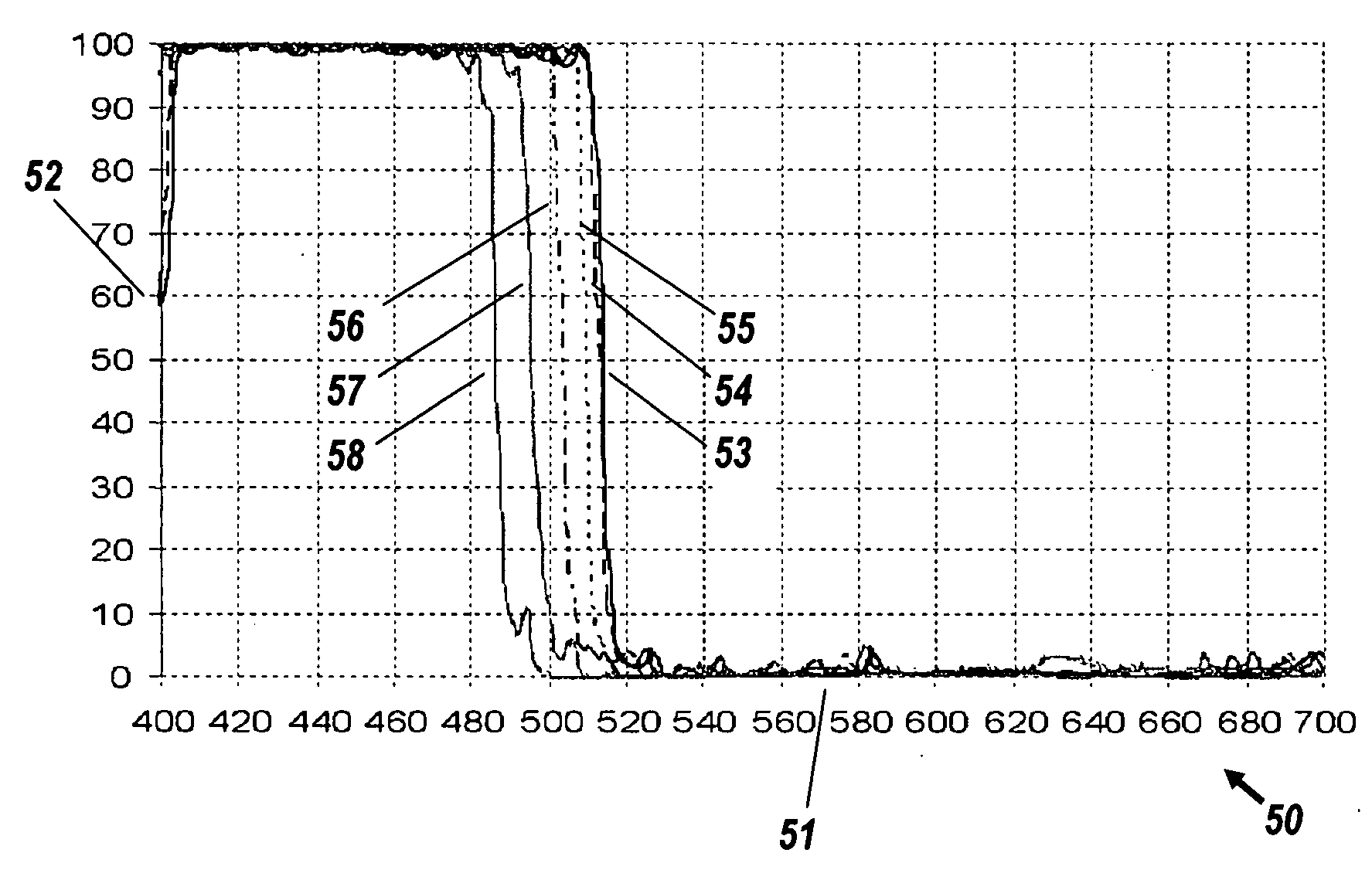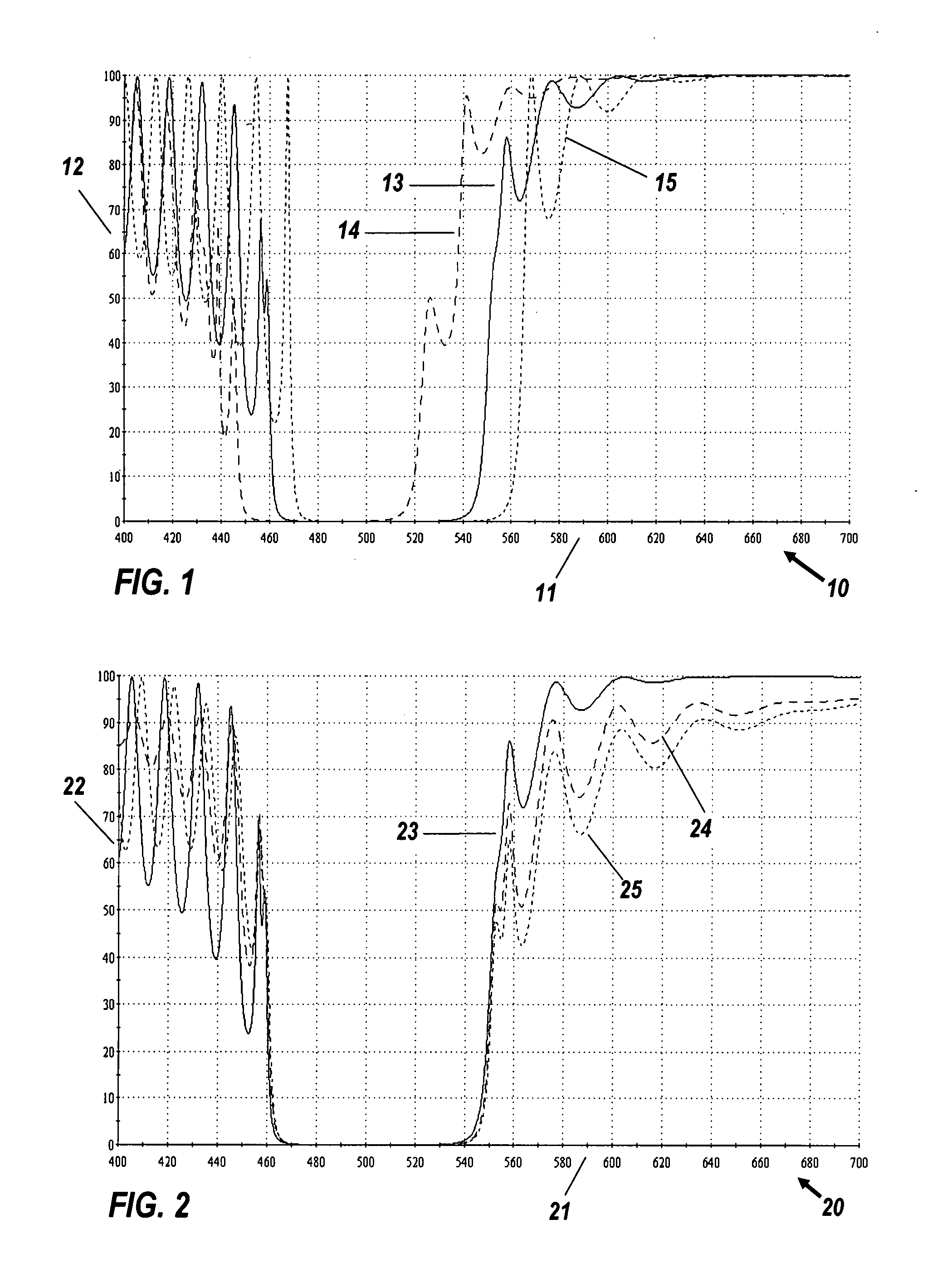Wideband dichroic-filter design for LED-phosphor beam-combining
- Summary
- Abstract
- Description
- Claims
- Application Information
AI Technical Summary
Benefits of technology
Problems solved by technology
Method used
Image
Examples
Example
DETAILED DESCRIPTION OF THE DRAWINGS
[0050]Reference will now be made in detail to various embodiments of the present invention, examples of which are illustrated in the accompanying drawings. The embodiments are described by way of explanation, and not by way of limitation.
[0051]FIG. 1 shows a spectral transmittance graph 10 with horizontal wavelength scale 11 in nanometers (nm) and vertical transmittance scale 12 in %, for the m=20, 41-layer seed filter (0.75H, 0.5 L, 0.75H)̂20. Solid curve 13 is the transmittance for 15°, dashed curve 14 to its left is for 25°, and dotted curve 15 to its right is for normal incidence. As may be send in FIG. 1, there are minor changes in the shape of the curves, showing that they do more than shift in frequency when the incidence angle is changed.
[0052]FIG. 2 shows spectral graph 20 with horizontal wavelength scale 21 in nanometers (nm) and vertical transmittance scale 22 in %, for the m=20, 41-layer seed filter. Solid curve 23 is the transmittance...
PUM
 Login to View More
Login to View More Abstract
Description
Claims
Application Information
 Login to View More
Login to View More - R&D Engineer
- R&D Manager
- IP Professional
- Industry Leading Data Capabilities
- Powerful AI technology
- Patent DNA Extraction
Browse by: Latest US Patents, China's latest patents, Technical Efficacy Thesaurus, Application Domain, Technology Topic, Popular Technical Reports.
© 2024 PatSnap. All rights reserved.Legal|Privacy policy|Modern Slavery Act Transparency Statement|Sitemap|About US| Contact US: help@patsnap.com










